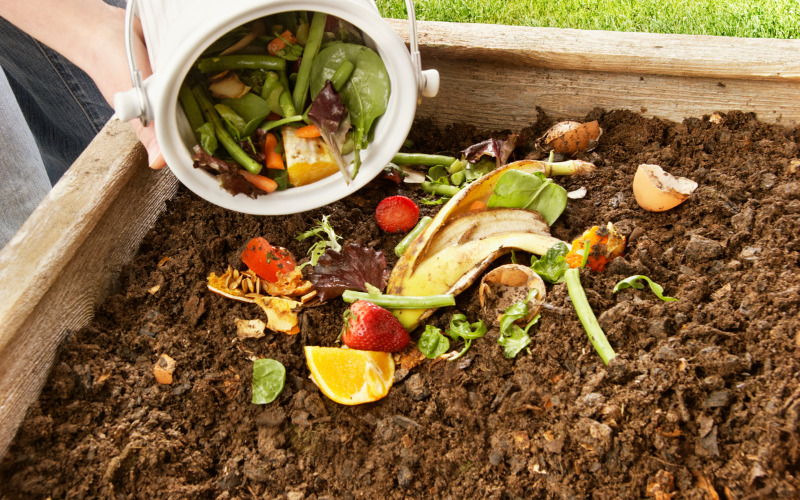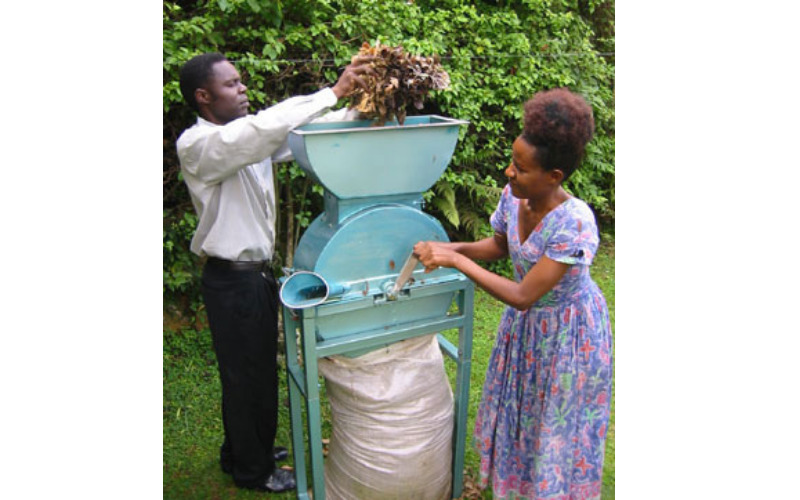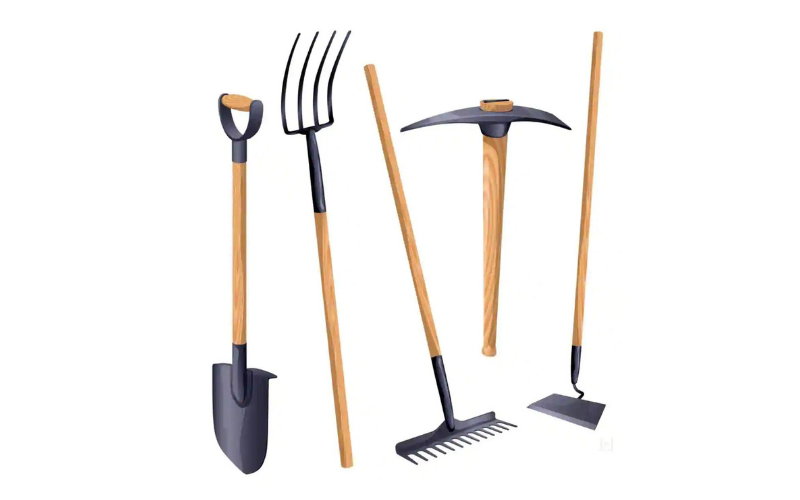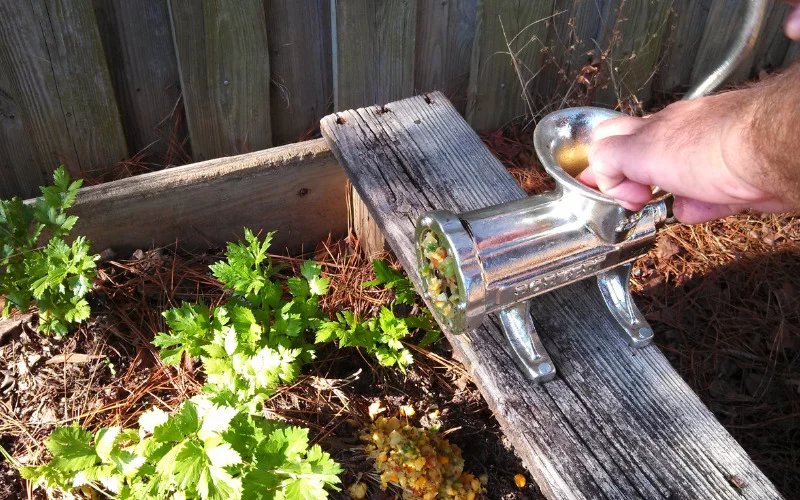We are in a world where everything is going green, from what we eat to how we eat, what we wear, and what we drive; what better way to accentuate this than by farming green.
Compost is an age-long way of gardening and farming in which waste materials are recycled into our soils as a source of nutrients.
Composting is the most environmentally friendly farming method that produces organic foods that are free of all foreign materials. It is simply giving back to the soil what we got from it.
When we want to make compost and grind the compost materials, it is good and fastens the whole process. I will attempt to answer some concerns you have with regards to making and using compost.
What Are the Issues That Many People Have with Making Compost?
Many gardeners love the benefits of using compost in their garden, but they are put off by the fact that the process of making them is too complicated.
Others say their major snag is the smell and the fact that it takes a lot of time to make compost and that the whole process is generally messy.
Well, this is not entirely true because, for one, making compost is easy, and some composting processes are not stinky or messy. As for the time it takes, I will say it is worth every second of it.
Can I Use Any Material to Make My Compost?
No, you cannot. While most food scraps and agricultural waste can be composted, some others should not because they might not decompose easily or might have harmful effects on the soil or microorganisms.
Straws, vegetable wastes, wood chips, fruit peels and wastes, nuts and nutshell, leaves, grasses, eggshells, coffee grinds, and yard trimmings are some materials that can be used to make compost.
Other materials like papers of any kind, such as newspaper, cardboard, glossy paper, vacuumed materials, and shavings from treatment trees, should not be used to make compost.
Any artificial material that can release chemicals into the soil and the crops must be avoided.
Generally, compost materials are divided into 2
- The green materials: These are mostly vegetables, fruits, coffee grounds, eggshells, among others. They are the materials that are rich in nitrogen which plants need for growth.
- The brown materials: These include most fibrous materials like hay, shells, wood chippings, and the likes; they are rich in carbon and supply energy in the system.
How Do I Make Compost?

There are different methods for making compost, including:
1. Trench composting: in this method, a trench of about one foot is dug and filled with the compost material to about 4 inches deep.
The trench is further covered with a layer of leaves and then filled up with the dug-out soil. The compost will form after a few months, and crops can be planted on them.
2. Pit composting: this is almost the same as trench composting, only that in this case, the depth of the holes is deeper.
3. Soil surface composting: this is used for composting more delicate compost materials that decompose fast, like vegetable peelings.
Here, the compost materials are poured on the soil surface and then covered with a layer of manure. After a few months, the materials will decompose entirely into the ground.
(These first three methods are together known as in-situ composting)
4. Vermicomposting: this is the type of composting in which worms are introduced to help decompose the compost materials. It is used mainly for decomposing food scraps.
This method starts with getting a worm bin that is kept indoors in which all food scraps are poured into.
Then worms can be bought online or in stores and then introduced into the bin; as the worm eat and decompose the materials, your compost is formed.
5. Outdoor composting: this method is best for warm weather, and the process involves getting a dry place with lots of shade in the backyard.
A mixture of one-part green compost materials and two-parts brown compost materials should be piled up in a composting bin.
The compost material is first converted to humus in a couple of months. Water is then sprayed frequently on the hummus so that it turns into humus. It is also turned frequently for aeration purposes. It is ready when it turns soft and dark.
6. Indoor composting: this composting method can be done at any time of the year.
A bin is drilled with holes and the sides, the container is then placed on a tray and some paper towel laid on its floor.
The compost material in the ratio of 1: 2 for green and brown, respectively, should be piled up into the bin.
After a few months, the material will turn dark and crumbly, and it is ready to go.
Should I Grind My Compost?

Yes, you can grind your compost, and by so doing, you give more surface area for the material to be quickly decomposed.
Grinding the compost also helps break down resistant and tough materials like shells to be easily decomposed.
At a particular stage in the decomposition process, the heat energy generated from grinding the compost helps destroy the seeds of weeds that could have been introduced into the soil.
How Do I Grind My Compost?
Many agro-machines are used in grinding your compostable materials, and they come at various sizes, shapes, and prices. Some improvise with woodchippers, but the result is not the same.
The best option is acquiring a composting machine, and most of these machines help take care of the issue of smelly compost because they eliminate it. Most of these machines do not need venting or drainage and have a system for monitoring the filter.
RECOMMENDED: 5 Best Composting Grinder for Home Use
How Do You Grind Food Scrapes for Compost?
You can use one of the wide ranges of grinding machines used for grinding and making compost, and they are readily available in shops. There are also some life hacks used in grinding compost materials, one of which is the use of a blender.
This process is so easy, all you need do is gather up the food scrape, and if you are not ready to blend them immediately, you can put them in a zip bag and freeze them until you are prepared. The kitchen blender can then be used to blend the food scrapes.
A lot of water is added while bending the scrap, and it is blended until it is the consistency of a smoothie, and then it can be put in a compost bin or even directly to the soil. Meat and dairy products should never be added to the compost materials.
What Is the Best Tool to Turn Compost?

A compost Turner also known as a compost aerator can be used to aerate the compost by mixing the compost layer properly.
These implements can come in the form of corkscrew, which is excellent for light compost, and plungers used basically for heavier composts with many dried leaves. There are different brands of compost aerators, including yard butlers and lotech products.
How Do You Break Down Compost Quickly?
Breaking down compost quickly is possible if you do the following:
- Shredding or grinding of the compost material: his help increases the surface area, which means the decomposition will become faster.
- Moisture: when adequate water is added promptly and sufficiently, it will help in the multiplication of microbes that decompose compost materials.
- Aeration: regularly turning the compost will speed up the decomposition process because the microbes require oxygen to continue the process in some decomposition stages.
Can You Compost Directly Into The Ground?
Yes, you can, and it is called in-situ composting; it can be a surface, trench, or pit composting, and they produce equally quality compost.
Can You Turn Compost Too Much?
Yes, you can turn the compost too much, but instead of speeding up the process, it can end up slowing it down.
At the anaerobic stage of compost materials decomposition, the microbes that are involved do not need oxygen and are slowed down when the compost is turned frequently.
At this stage, the compost should be turned in once fortnightly or once in 3 weeks.
Conclusion
We would conclude by reminding you that you can put your food scraps and other such waste into something useful: that is compost.
There are different ways of making compost: indoors, outdoors, or in-situ, which means making compost on the soil where they will be used. Also, remember that grinding your compost is excellent in making your compost yield faster.
Compost is suitable for your soil and garden for growing fruits and vegetables. So don’t let little things like the stink or the messiness of the compost stop you.
You May Also Like:
- 5 Best Composting Grinder for Home Use
- Guide to Prevent Mushroom in Mulch
- Top 10 Profitable Backyard Farming in The U.S
Hope this article helped you determine if you should grind up compost. You may also want to bookmark our article on How Good Urine is for Compost.
I will love to hear from you if you have any other suggestions on How Do I Grind My Compost, all you have to do is comment below and reach out to people by sharing this post on social media.
If you liked this article, then please follow us on Facebook, Instagram, and Pinterest.

